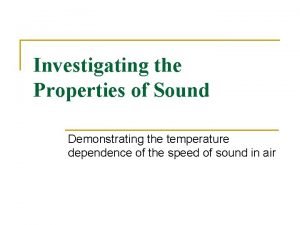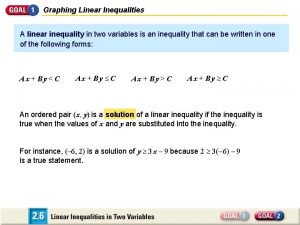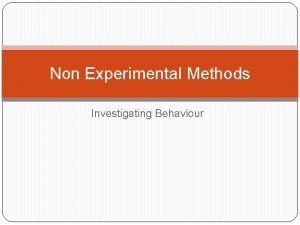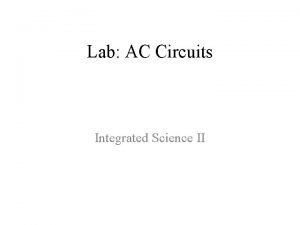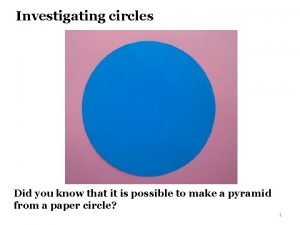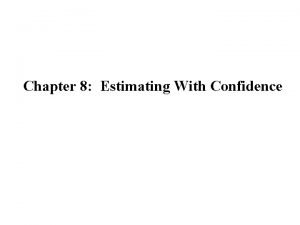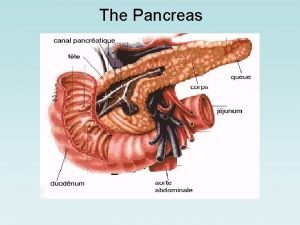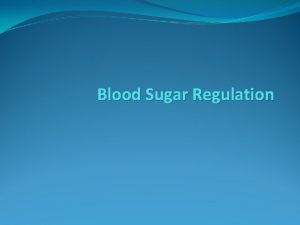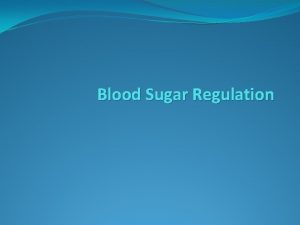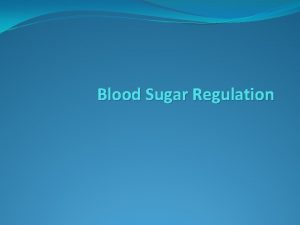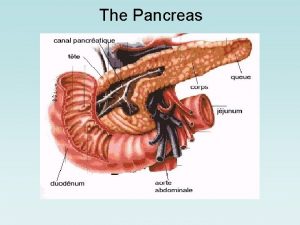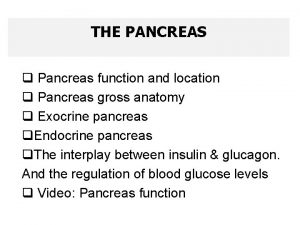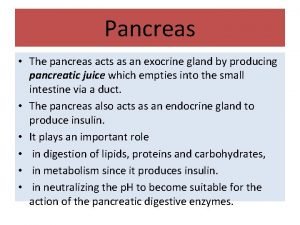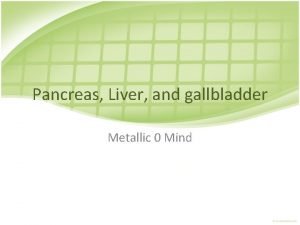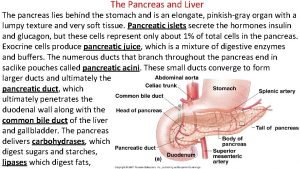Investigating Key Design Elements for an Artificial Pancreas








































- Slides: 40

Investigating Key Design Elements for an Artificial Pancreas Mobile Application Logan Clark, Chase Evans, Gabi Guadagnino, Emily Huffer, and Erin Murphey 2019 HFES Student Design Competition 1

Overview Background Diabetes Design Challenge Phase 1 Goals Prototyping Testing Phase 2 Goals Prototyping Future Work Refinement 2

Diabetes: The Numbers (2015) 1 • 30. 3 million Americans diagnosed (9. 4%) • 1. 5 million new diagnoses each year • 7 th leading cause of death 3. 5 x 3

Managing Blood Glucose 4 Image: www. endocrineweb. com/conditions/diabetes

Type 1 Diabetes 5 Image: www. endocrineweb. com/conditions/diabetes

Treatment: Insulin Therapy Insulin Injection 6

Insulin Therapy Methods Initial Approach 1. Test: Manual 2. Recall: Manual 3. Calculate: Manual 4. Inject: Manual Current Technology CGM App Artificial Pancreas CGM App Info rm Input Control Algorithm Display ct ru t s n I Pump 7

Challenge: Display Representation 8

Key Relationships to Represent Measured Blood Glucose Boundaries of Safety Measured Blood Glucose Insulin Active in System Raw Physiological Measures User Input Exercise Detection System Response 9

Design Phase 1: Prototyping and Testing Question: How to represent status relative to boundaries? Hard Boundary Graphical Gradient Text 10

Results: Completion Time 11

Results: Accuracy Prototype A Prototype B Prototype C 6/6 1/6 5/6 12

Design Phase 1: Refined Prototype 13

Design Phase 2: New Considerations 1. Targets and safe boundaries can vary over time • Goal: Represent changes over time 2. User behaviors can influence variability in safe boundaries • Goal: Represent boundaries in the context of user behavior 3. Present state relative to boundaries not salient • Goal: Saliently represent current glucose reading and its relationship to boundaries 14

Design Phase 2: Static Prototype 15

Design Phase 2: Static Prototype 16

Design Phase 2: Static Prototype 17

Swipe Design Phase 2: Static Prototype 18

Design Phase 2: Static Prototype 19

Future Work • Domain Expert Consultation • Additional task constraints? • Accurate representation of task structure? • Testing with Users • Appropriate interactions? • Missing representations? • User behavior overlooked sources of regularity? 20

Thank You for Your Attention 21

Appendix 22

Future Work: Functional • Individual Differences • Represent influence on system behavior • Predictive display? • Represent anticipated effects of system behaviors • Alerts • Timing, modality etc. 23

Current Prototype Challenge: Contextualizing BG Measurements • High BG + sufficient active insulin BG will decrease soon • High BG + insufficient active insulin action needed 24

Current Prototype Challenge: Contextualizing BG Measurements • Possible approach: Display BG on the same scale as TAI CF: Expected reduction in BG per 1 unit of active insulin BGC: Current BG level BGT: Target BG level Estimated insulin needed to return to target BG level 25

Current Prototype Challenge: Contextualizing BG Measurements • Possible approach: Display BG on the same scale as TAI CF = 30 BGC = 172 BGT = 110 2. 07 U needed to return to target 26

Current Prototype Challenge: Contextualizing BG Measurements Active Insulin (U) • Possible approach: Display BG on the same scale as TAI Displayed BG Time 27

Current Prototype View 2: Total Active Insulin (TAI) Swipe 28

Current Prototype View 2: Total Active Insulin (TAI) • Display BG levels in the context of current system state (TAI) • Textual readouts for key variables 29

Current Prototype View 2: Total Active Insulin (TAI) • Highlight mismatch between current BG and system response 1. Presence 2. Nature 3. Duration 30

Current Prototype View 2: Total Active Insulin (TAI) • Highlight mismatch between demands and system response 1. Presence 2. Nature 3. Duration 4. Magnitude 31

Current Prototype View 2: Total Active Insulin (TAI) • Highlight how exercise changes relationship between BG demands and system response 32

Current Prototype View 2: Total Active Insulin (TAI) • Highlight how exercise changes relationship between BG demands and system response 33

Current Prototype View 3: Exercise Detection Swipe 34

Current Prototype View 3: Exercise Detection • For detection threshold crossing, represent: U HR PA 1. Presence 2. Nature 3. Duration 4. Magnitude 5. Contributing Measures • User Variables (U) • Heart Rate (HR) • Physical Activity (PA) 35

Current Prototype View 4: Input/Planning Swipe 36

Current Prototype View 4: Input/Planning • Basic exercise input using default settings Swipe • View and edit scheduled events • Continued access to data from other views 37

Current Prototype View 4: Input/Planning • Basic meal announcement using default settings Swipe 38

Current Prototype View 5: Detailed Input • Basic meal variable input • Schedule repeat events • View process and parameters used to act on announcement 39

Type 2 Diabetes 40 Image: www. endocrineweb. com/conditions/diabetes
 Csci-b 551 elements of artificial intelligence
Csci-b 551 elements of artificial intelligence Investigating the properties of sound
Investigating the properties of sound Investigating science hsc
Investigating science hsc Practice a investigating graphs of polynomial functions
Practice a investigating graphs of polynomial functions Investigating graphs of functions for their properties
Investigating graphs of functions for their properties Unit 14 investigating customer service
Unit 14 investigating customer service Investigating the world of work. lesson 1
Investigating the world of work. lesson 1 Investigating graphs of polynomial functions
Investigating graphs of polynomial functions Unit 14 investigating customer service assignment 1
Unit 14 investigating customer service assignment 1 Investigating the graph of an inequality
Investigating the graph of an inequality Digital graphics to entertain
Digital graphics to entertain Investigating polynomials
Investigating polynomials Investigating system requirements
Investigating system requirements Science 14 module 1 answer key
Science 14 module 1 answer key How is a delta formed
How is a delta formed Investigating graphs of polynomial functions
Investigating graphs of polynomial functions Investigating quadratics
Investigating quadratics Investigating rivers
Investigating rivers Investigating skills. thomas edison
Investigating skills. thomas edison Methods of investigating behaviour
Methods of investigating behaviour Investigating conductors lab report
Investigating conductors lab report What shape is this
What shape is this Investigating and making a case for drug diversion
Investigating and making a case for drug diversion Language meaning
Language meaning Investigating system requirements
Investigating system requirements Investigating specific heat capacity
Investigating specific heat capacity Cpalms investigating plant and animal cells
Cpalms investigating plant and animal cells Chapter 8 estimating with confidence
Chapter 8 estimating with confidence Revenue streams example business model canvas
Revenue streams example business model canvas Contoh bisnis model canvas makanan pdf
Contoh bisnis model canvas makanan pdf Elements of interior design ppt
Elements of interior design ppt Kontinuitetshantering
Kontinuitetshantering Typiska drag för en novell
Typiska drag för en novell Tack för att ni lyssnade bild
Tack för att ni lyssnade bild Vad står k.r.å.k.a.n för
Vad står k.r.å.k.a.n för Varför kallas perioden 1918-1939 för mellankrigstiden
Varför kallas perioden 1918-1939 för mellankrigstiden En lathund för arbete med kontinuitetshantering
En lathund för arbete med kontinuitetshantering Personalliggare bygg undantag
Personalliggare bygg undantag Tidbok för yrkesförare
Tidbok för yrkesförare A gastrica
A gastrica Förklara densitet för barn
Förklara densitet för barn

